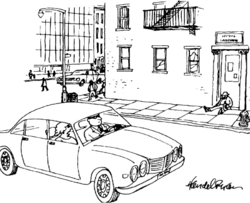This is a very short section
New section content.
In class, we notice that Juliette seldom talks; over coffee, Jack talks nonstop. Attributing their behaviors to their personal dispositions, we decide Juliette is shy and Jack is outgoing.
There was no effect. The students disregarded the information. If the woman acted friendly, they inferred she really was a warm person.
16.1.1 Attributing Behavior to Persons or to Situations
1: How do we tend to explain others’ behavior and our own?
After studying how people explain others’ behavior, Fritz Heider (1958) proposed an attribution theory. Heider noted that people usually attribute others’ behavior either to their internal dispositions or to their external situations. A teacher, for example, may wonder whether a child’s hostility reflects an aggressive personality (a dispositional attribution) or a reaction to stress or abuse (a situational attribution).

In class, we notice that Juliette seldom talks; over coffee, Jack talks nonstop. Attributing their behaviors to their personal dispositions, we decide Juliette is shy and Jack is outgoing. Because people do have enduring personality traits, such attributions are sometimes valid. However, we often fall prey to the fundamental attribution error, by overestimating the influence of personality and underestimating the influence of situations. In class, Jack may be as quiet as Juliette. Catch Juliette at a party and you may hardly recognize your quiet classmate.
An experiment by David Napolitan and George Goethals (1979) illustrated the phenomenon. They had Williams College students talk, one at a time, with a young woman who acted either aloof and critical or warm and friendly. Beforehand, they told half the students that the woman’s behavior would be spontaneous. They told the other half the truth—that she had been instructed to act friendly (or unfriendly). What do you suppose was the effect of being told the truth?
There was no effect. The students disregarded the information. If the woman acted friendly, they inferred she really was a warm person. If she acted unfriendly, they inferred she really was a cold person. In other words, they attributed her behavior to her personal disposition even when told that her behavior was situational—that she was merely acting that way for the purposes of the experiment. Although the fundamental attribution error occurs in all cultures studied, this tendency to attribute behavior to people’s dispositions runs especially strong in individualistic Western countries. In East Asian cultures, for example, people are more sensitive to the power of the situation (Masuda & Kitayama, 2004).
Question 16.1
What does attribution theory try to explain?
Attribution theory describes how we explain the behavior of others. Fritz Heider (1958) described two different kinds of attributions: Dispositional attributions (attributing the behavior of others to their personality) and situational attributions (attributing the behavior of others to environmental/situational factors).
16.1.2 The Fundamental Attribution Error

You have surely committed the fundamental attribution error. In judging whether your psychology instructor is shy or outgoing, you have perhaps by now inferred that he or she has an outgoing personality. But you know your instructor only from the classroom, a situation that demands outgoing behavior. Catch the instructor in a different situation and you might be surprised. Outside their assigned roles, professors seem less professorial, presidents less presidential, servants less servile.
The instructor, on the other hand, observes his or her own behavior in many different situations—in the classroom, in meetings, at home—and so might say, “Me, outgoing? It all depends on the situation. In class or with good friends, yes, I’m outgoing. But at conventions I’m really rather shy.” When explaining our own behavior, or the behavior of those we know well and see in varied situations, we are sensitive to how behavior changes with the situation (Idson & Mischel, 2001). (An important exception is our own intentional and admirable actions, which we more often attribute to our own good reasons than to situational causes [Malle, 2006; Malle et al., 2007]).
When explaining others’ behavior, particularly the behavior of strangers we have observed in only one type of situation, we often commit the fundamental attribution error: We disregard the situation and leap to unwarranted conclusions about their personality traits. Many people initially assumed the 9/11 terrorists were obviously crazy, when actually they went unnoticed in their neighborhoods, health clubs, and favorite restaurants.
QuickCheck Question 16.2
The fundamental attribution error refers to your tendency to attribute others' behavior to , and your behavior to .
Researchers who have reversed the perspectives of actor and observer—by having each view a replay of the situation filmed from the other’s perspective—have also reversed the attributions (Lassiter & Irvine, 1986; Storms, 1973). Seeing the world from the actor’s perspective, the observers better appreciate the situation. (As you act, your eyes look outward; you see others’ faces, not your own.) Taking the observer’s point of view, the actors better appreciate their own personal style. Reflecting on our past selves of 5 or 10 years ago also switches our perspective. We now adopt an observer’s perspective and attribute our behavior mostly to our traits (Pronin & Ross, 2006). Likewise, in another 5 or 10 years, our today’s self may seem like another person.
